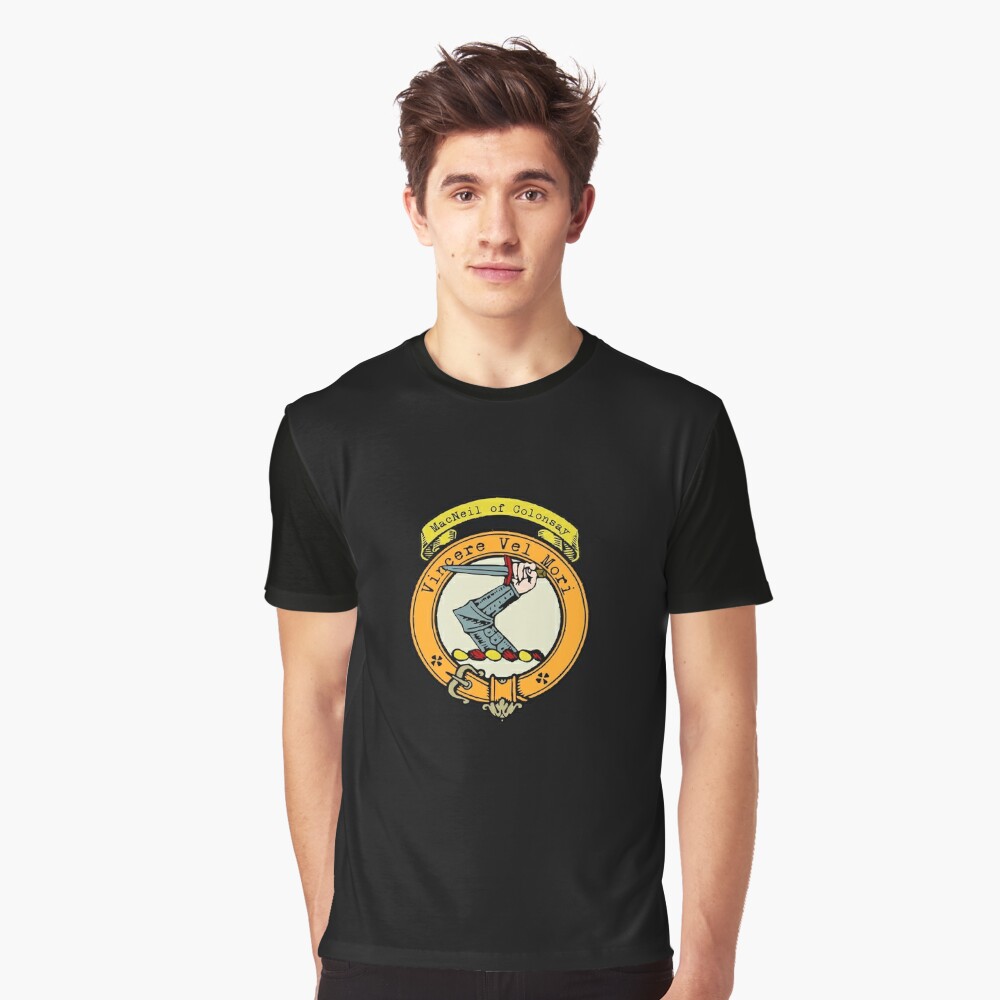Clan MacNeil of Colonsay Crest
|
|
CREST: An armoured arm and hand holding a dagger, Proper MOTTO: Vincere Vel Mori TRANSLATION: To conquer or die |
| The origins of Clan MacNeil of Colonsay can be traced back to the Argyll mainland and the island of Gigha. The clan’s name was originally spelled as MacNeill, and they were led by chieftains with a lineage that can be traced back to Torquil MacNeill of Taynish. In 1440, Torquil was granted the islands of Gigha and Danna, as well as some mainland lands, by Alexander, Lord of the Isles.
One of the clan’s most memorable chiefs was Rory MacNeill, often known as “The Turbulent” or “Ruari the Tartar.” Rory gained notoriety for his wild Viking ways and was described as a hereditary outlaw. His fearless and daring character left an indelible mark on the clan’s history, making him a prominent figure of his time. |
|
 |
|
| Purchase @ Redbubble Purchase @ Amazon.com Purchase @ Amazon.co.uk |
|
| In 1554, the clan faced a significant setback when the island of Gigha was sold to the Campbell clan. However, the MacNeills were determined to regain control of their ancestral lands, and by the end of the 16th century, they managed to repurchase Gigha. This demonstrated the clan’s resilience and unwavering attachment to their heritage.
In 1700, Donald MacNeil of Crear acquired the island of Colonsay from the Earl of Argyll, exchanging it for his own estates. This marked a new chapter in the clan’s history, solidifying their presence on Colonsay, where they would thrive for generations to come. The 19th century brought challenges for Clan MacNeil of Colonsay, particularly with the collapse of the kelp industry, which had been a major source of income for the island. As a result, Colonsay was sold to settle debts, leading to changes in the clan’s fortunes. Despite the challenges faced on Colonsay, the MacNeills expanded their reach beyond Scotland. Notably, the chieftainship of the clan eventually passed to a MacNeill living in New Zealand, showcasing the global influence and diaspora of the clan’s legacy. |
|
Citations:
|
|
